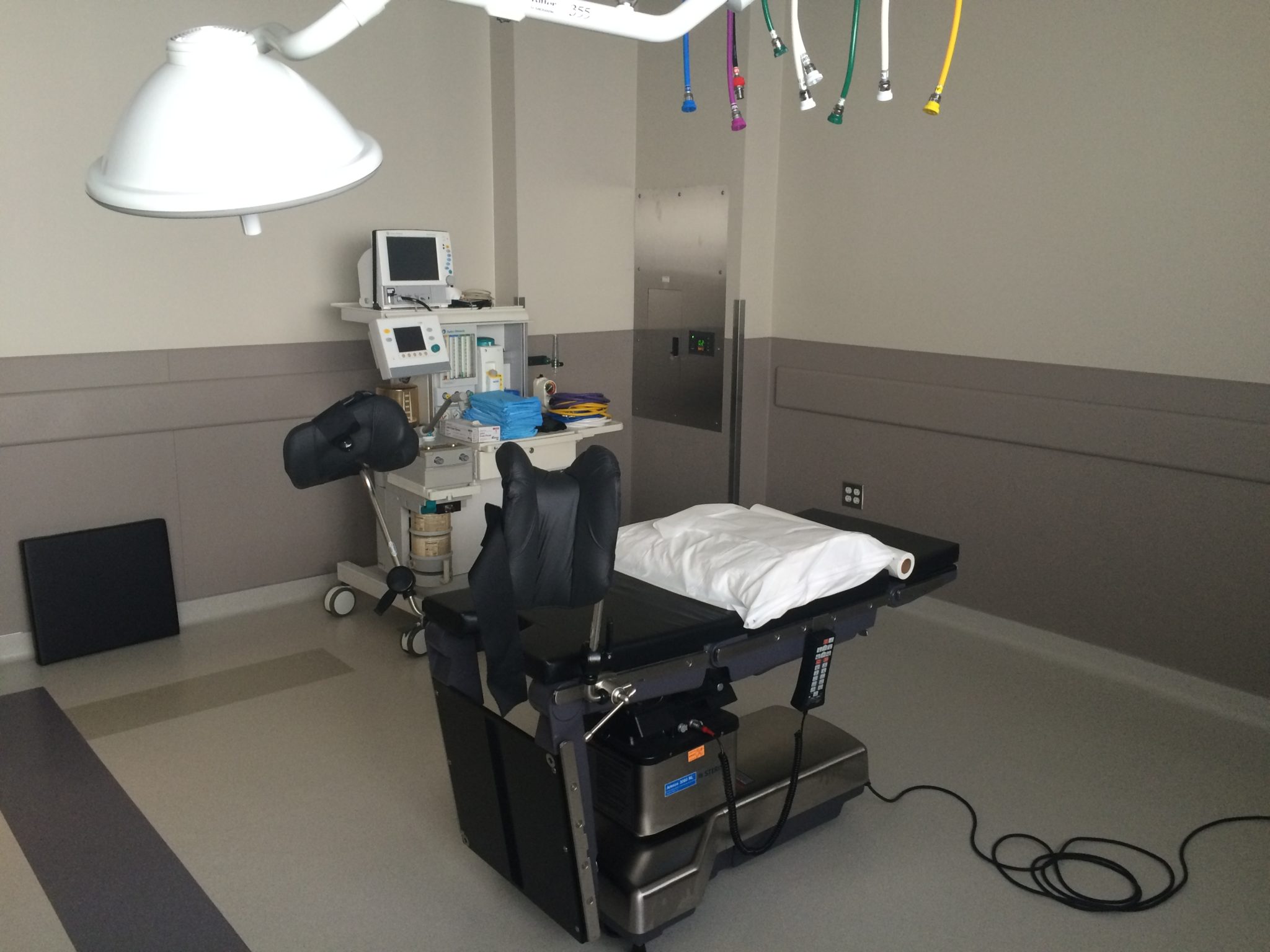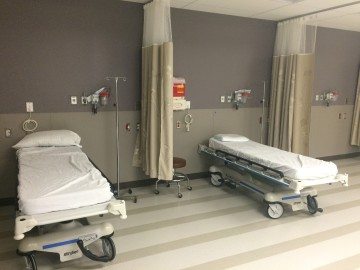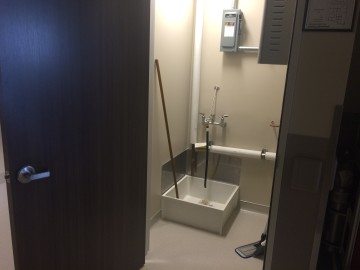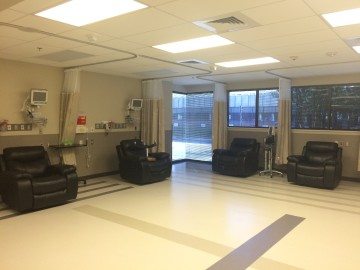
Inside San Antonio’s New $3 Million Abortion Facility

Above: Under HB 2's surgical center requirement, abortion facilities must have operating rooms that are least 240 square feet.
Dr. Alan Braid began performing abortions in San Antonio in 1978, just five years after Roe v. Wade. He’s been around long enough to appreciate how dramatically things have changed in the last few years, as conservative lawmakers have chipped away at abortion access by imposing waiting periods and medically unnecessary sonograms on women.
“The laws that have come about are designed to punish women, to make it harder for them to access” abortion, Braid said.
Chief among those is House Bill 2, passed in 2013, which has also led to profound changes in Braid and other doctors’ practices. In part, the law requires physicians to secure admitting privileges at local hospitals and mandates that abortions be performed at hospital-like ambulatory surgical centers, which must meet strict structural standards and can cost millions of dollars to equip. The choices for abortion providers like Braid were stark: upgrade their clinic, buy an expensive new facility or shut down. More than half of Texas abortion clinics have closed, in large part because of the surgical center requirement.

Rather than turn women away, Braid and his medical partner Dr. Eduardo Aquino, who, until recently ran Alamo Women’s Reproductive Services together on the northwest side of San Antonio, opted to buy a former radiology clinic and convert it into an ambulatory surgical center. The price tag: $3 million.
“We saw this as the only way to ensure we could keep seeing patients and be prepared for when the law was enforced,” he said. Providing abortions “was part of my training and is part of providing women’s health.”
In June, that facility, called the Alamo City Surgery Center, opened in San Antonio’s South Texas Medical Center. In July, I went to see what an abortion facility looks like in the post-HB 2 era.
When I arrived for the tour just before 9 a.m. on a humid morning, patients were already waiting outside the unassuming single-story building for their appointments.
The building has two entrances. One leads into the 2,800-square-foot clinic, where patients receive ultrasounds, blood tests and the counseling that the state requires at least 24 hours before an abortion. The waiting room on this side of the building has subdued gray walls, plants on small side tables and a flat-screen TV. The strong scent of air freshener permeates the room.
The building’s other entrance leads to the 7,200-square-foot ambulatory surgical center (ASC), where patients return for their procedures after a 24-hour waiting period. The standards dictate numerous structural details, down to the width of doors and hallways, as well as fire and safety features and administrative requirements.
Per the new ASC standards, the surgical center must have its own waiting room, Braid points out. Beyond the front desk lies a hallway of offices and one of two janitorial closets. (The standards specifically require two janitorial closets.)
Before entering the sterile operating area — the signature component of ambulatory surgical centers — we put on scrub hats and booties, another ASC requirement.

Behind the heavy, metal door separating the offices from the rest of the facility is essentially a hospital. Two walls are lined with several recliners, the “post-op” recovery beds. A gurney is stored at the end of the 8-foot-wide hallway. The facility is equipped with two operating rooms, where surgical abortions are performed, each required to be at least 240 square feet in size. Braid also showed me the locker room and shower for staff, a second janitorial closet with a faucet and drain, and specialized ventilation systems, all requirements under the new law.
Such features are necessary for more complex operations, such as orthopedic or gastrointestinal procedures, but not abortions, Braid notes as we finish the tour and look around the operating area. HB 2 even requires women who have a non-surgical, medication abortion, which simply involves taking two pills, to come to the surgical center.
“I see the absurdity in all this, the unnecessary waste and obstacles thrown at providers and patients for no reason other than ideology,” he said.
The entire project cost $3 million, which Braid says he paid for by taking out a loan. The architectural review and state licensing process took months, and the building had to pass two state inspections before Braid could open it up to patients. In a few months, state inspectors will be back at the surgical center to review patient records and other administrative files. In addition to the structural changes, Braid says the law has also forced him to hire more nurses and administrative staff.
“There is no basis in fact that doing procedures here [is] any safer than doing them in a local doctor’s office,” Braid said.
The ASC requirements are at the heart of the ongoing legal challenge to HB 2. The state maintains that the standards promote “the health and safety” of women. Abortion providers and medical groups, though, say they don’t make abortion safer. In fact, research shows abortions performed in surgical centers are no safer than those performed in outpatient clinics.
Texas is one of six states with laws requiring surgical abortions to take place in ambulatory surgical centers like Braid’s, and one of three that extends that requirement to medication abortion. Dan Grossman, a researcher who studies Texas abortion policy with Ibis Reproductive Health and the Texas Policy Evaluation Project, called Texas’ ASC requirement “extreme.”

“All of the research highlights that abortion as currently provided in the first trimester in outpatient clinics is exceedingly safe,” Grossman said. “For a medical abortion, a woman just has to be handed a tablet. There is no reason to be in a building that’s set up for major surgery.”
In late June, weeks after Alamo City Surgery Center opened its doors, the U.S. Supreme Court halted implementation of the ASC requirements while it considers whether to take up a challenge to the law. If HB 2 were to take full effect, Texas would be left with no more than nine abortion facilities to serve the entire state, leaving more than 900,000 Texas women 150 miles or more from a clinic. The high court is expected to make a decision this fall.
Should the court allow the law to take effect, Braid’s new ASC will have to absorb a lot of that demand.
“We built this [surgical center] big enough so that we can see a lot of patients,” he said. “We wouldn’t turn anyone away.”


